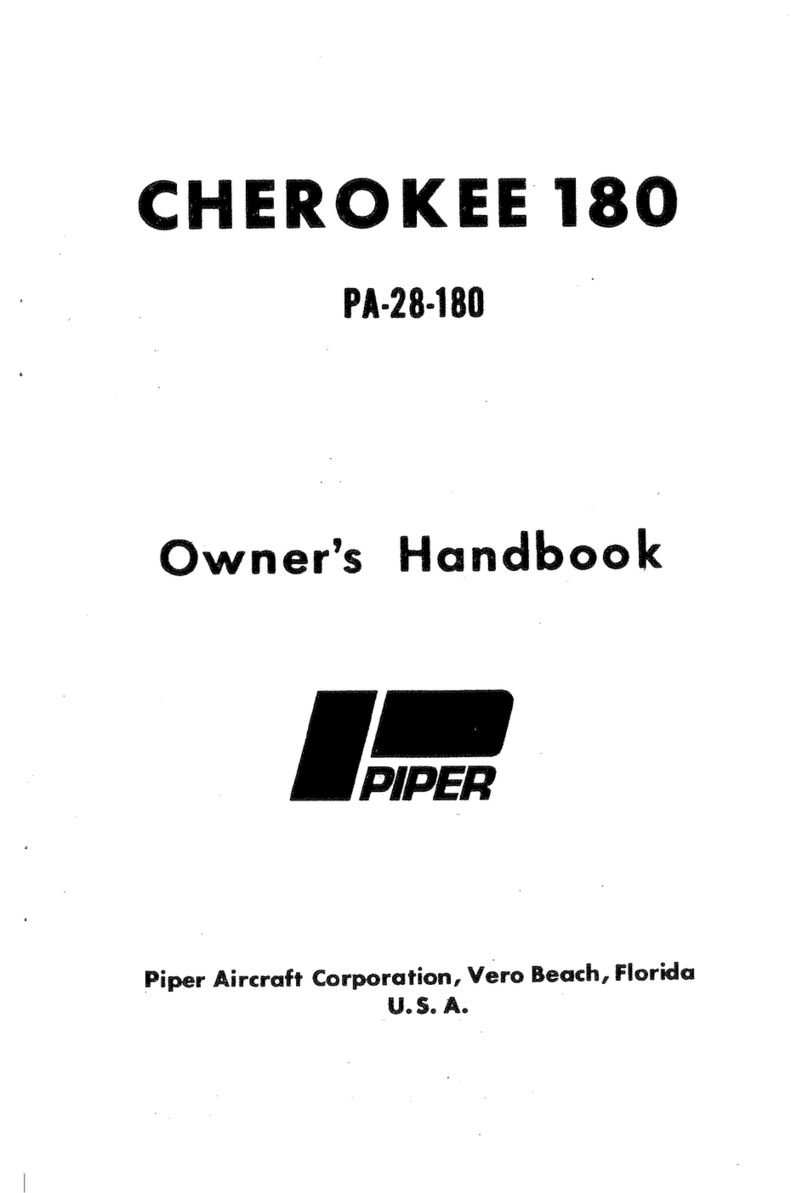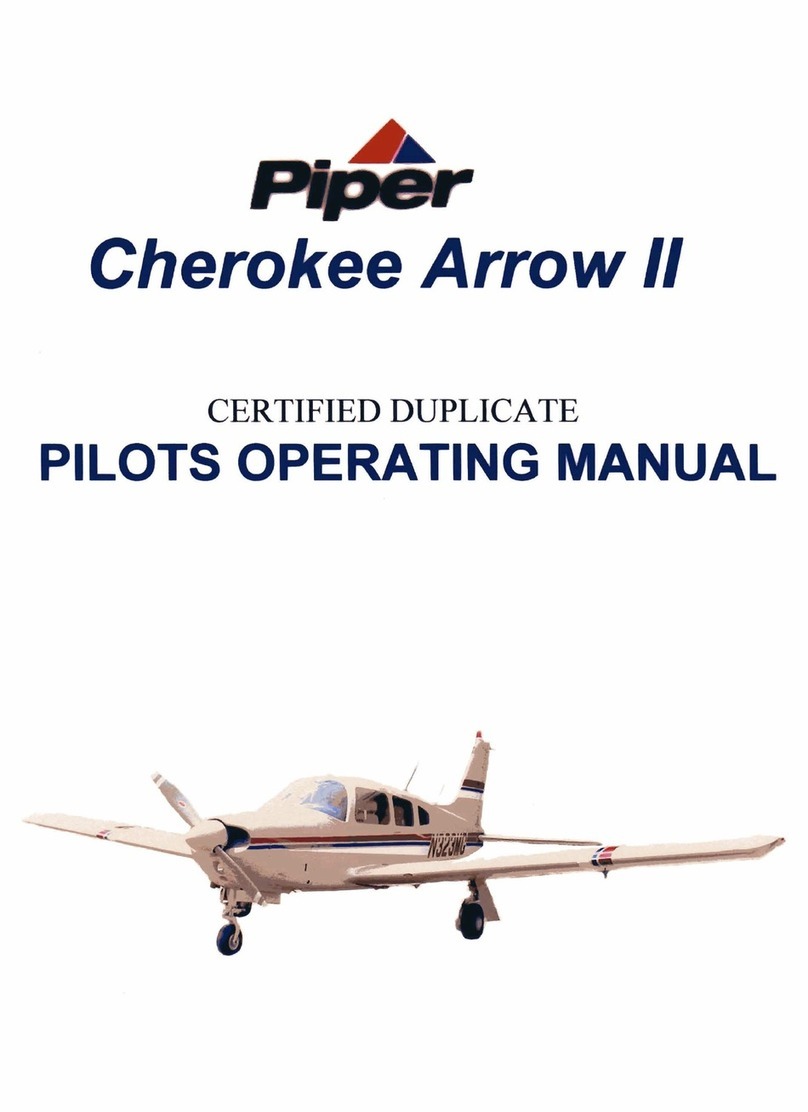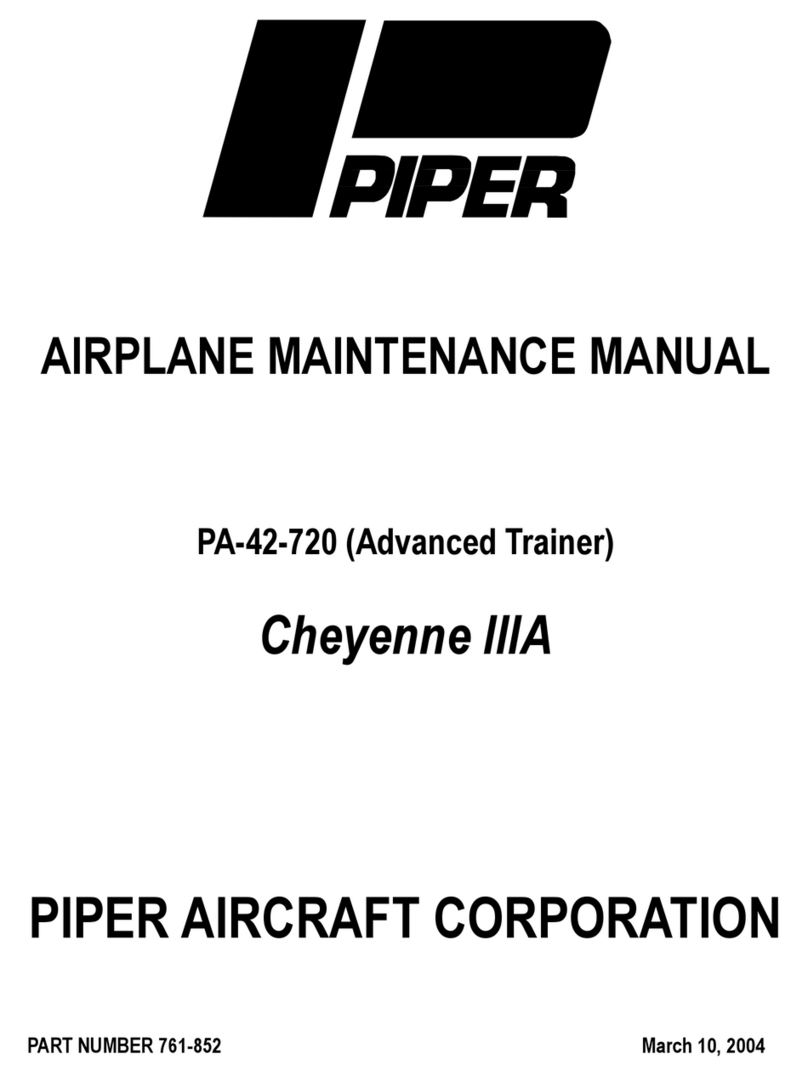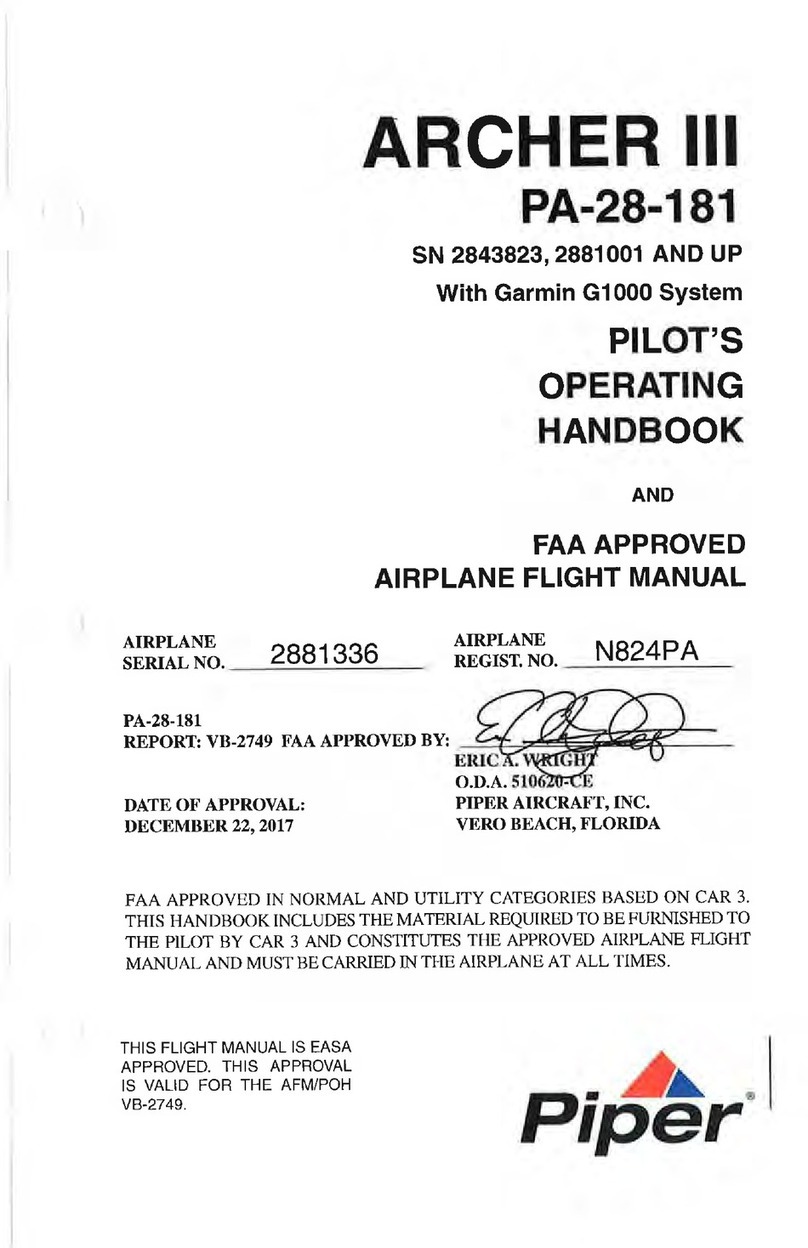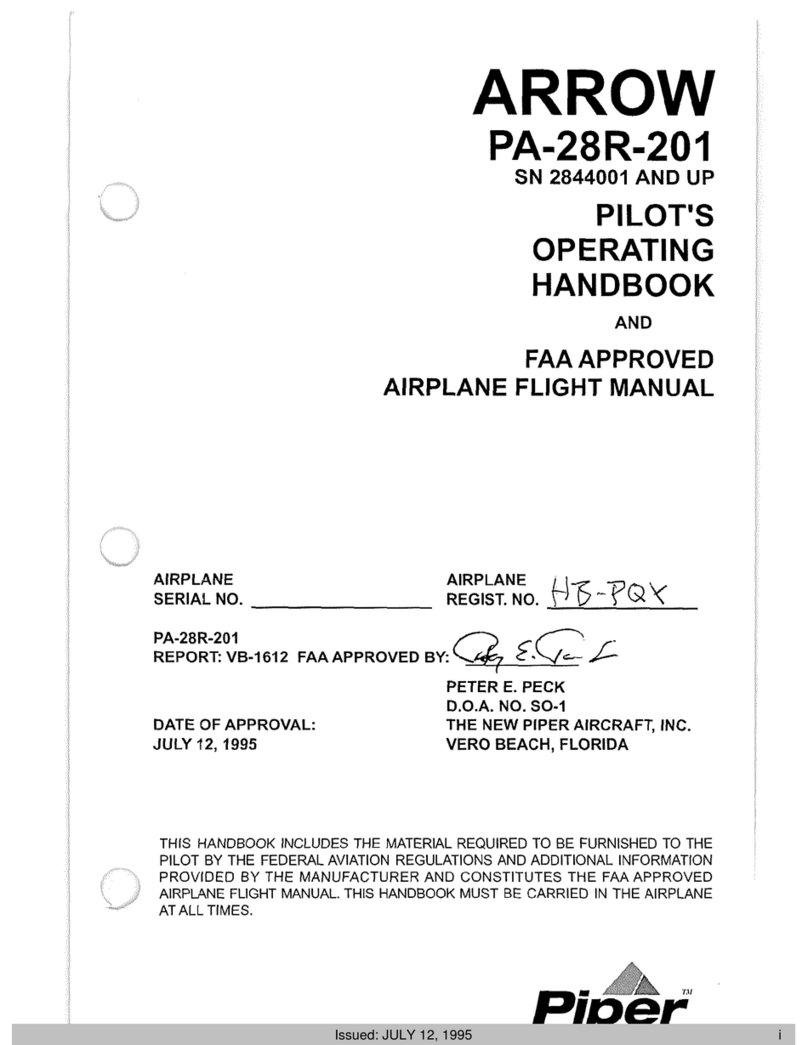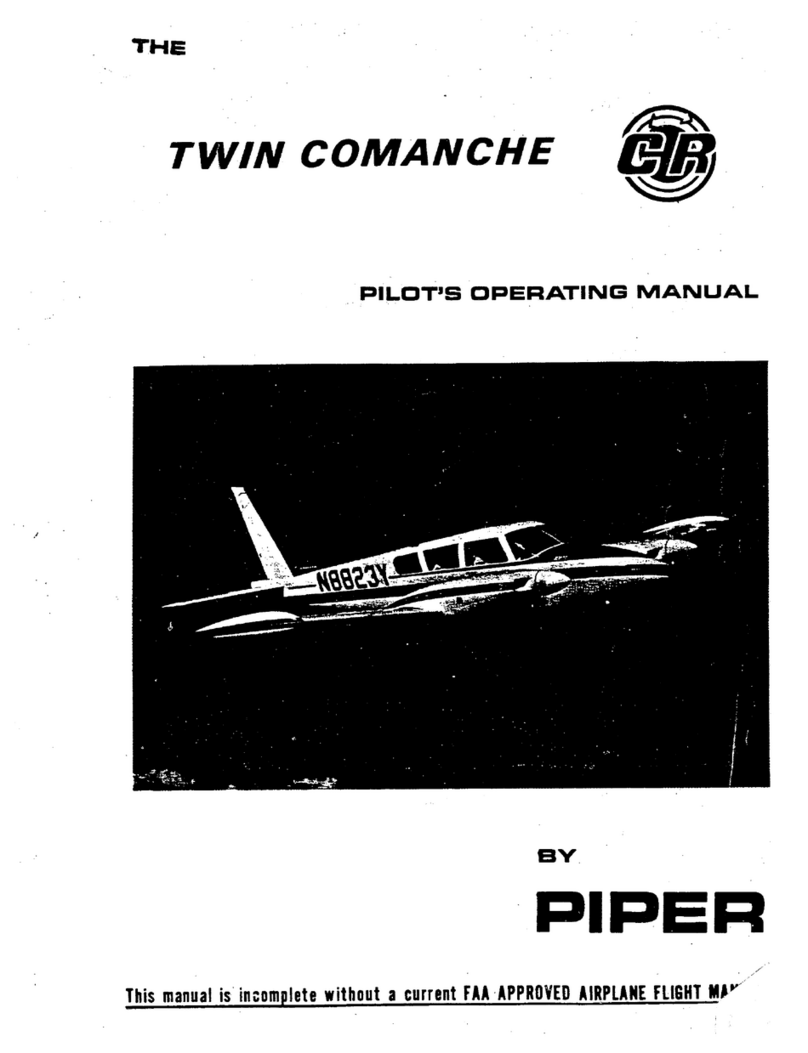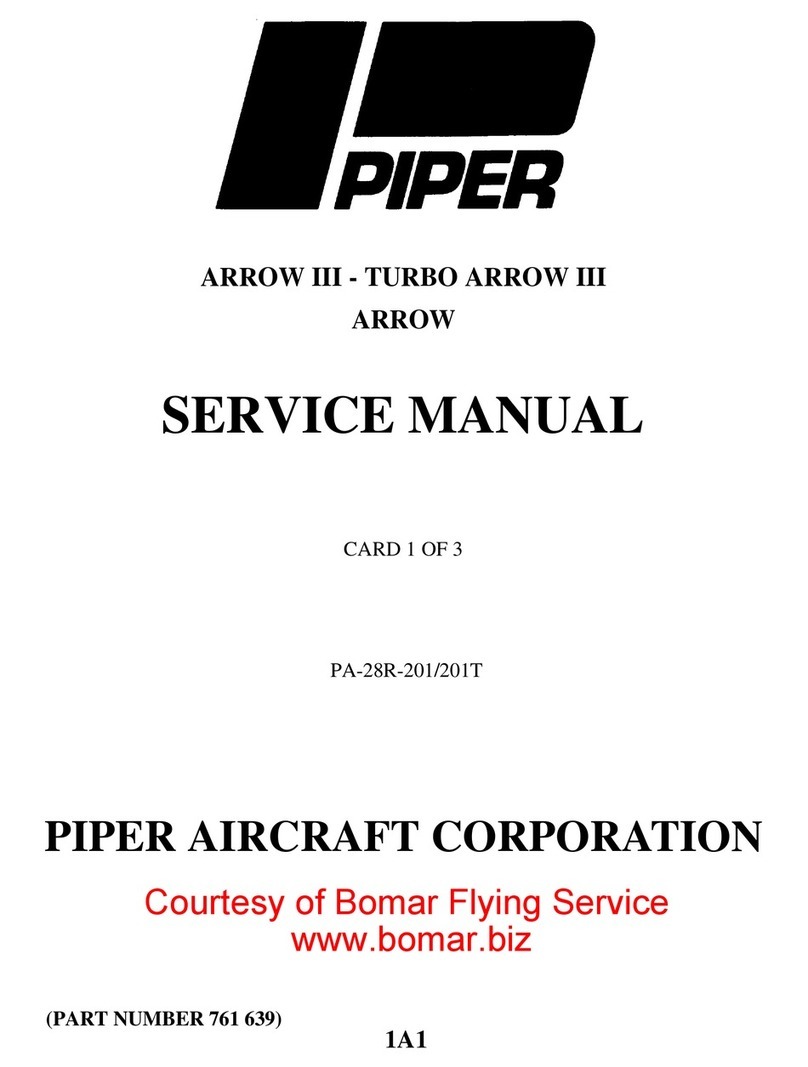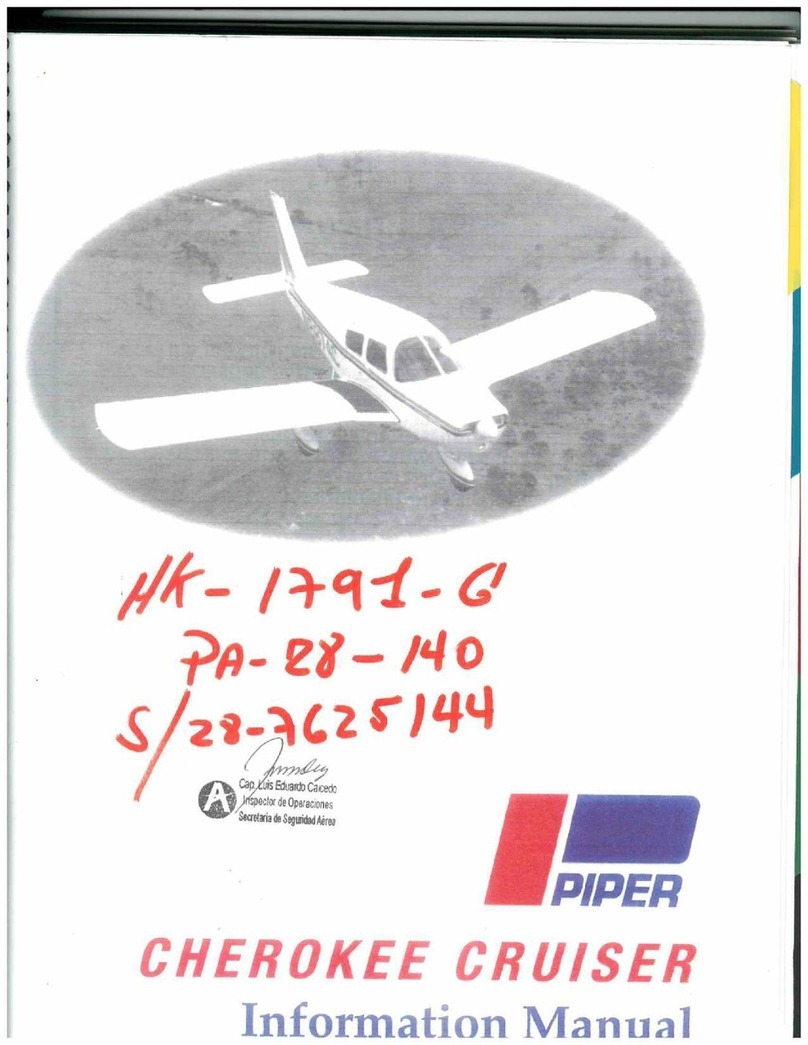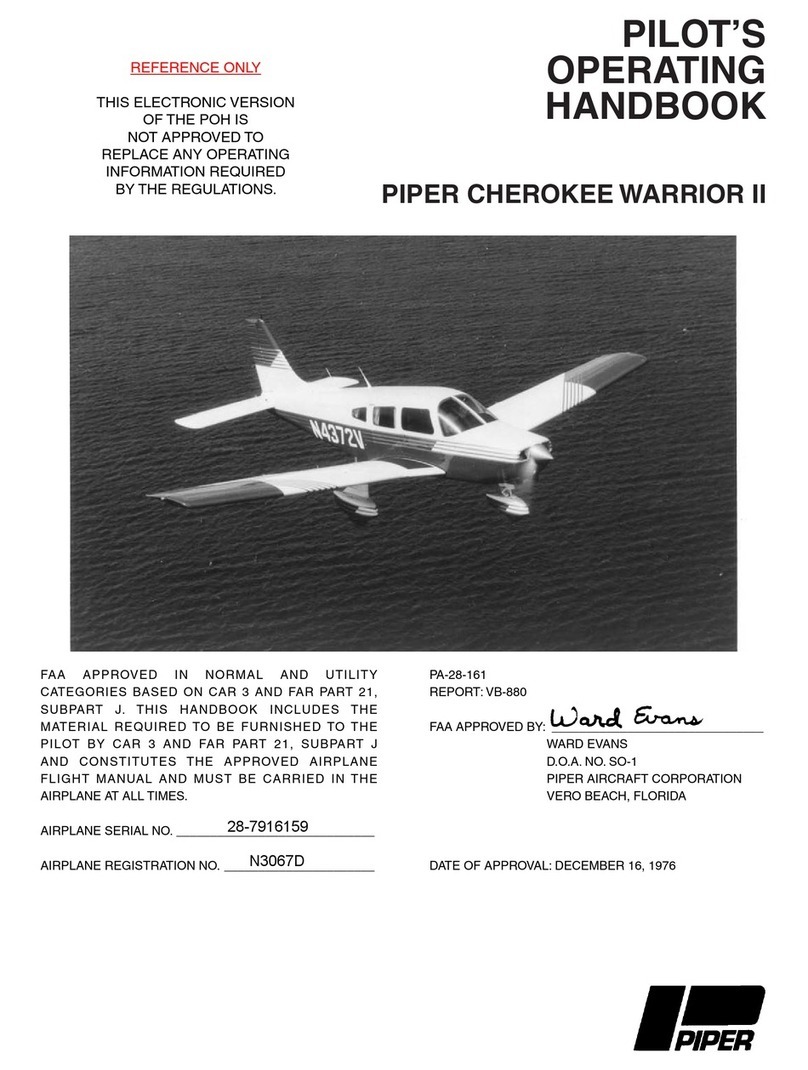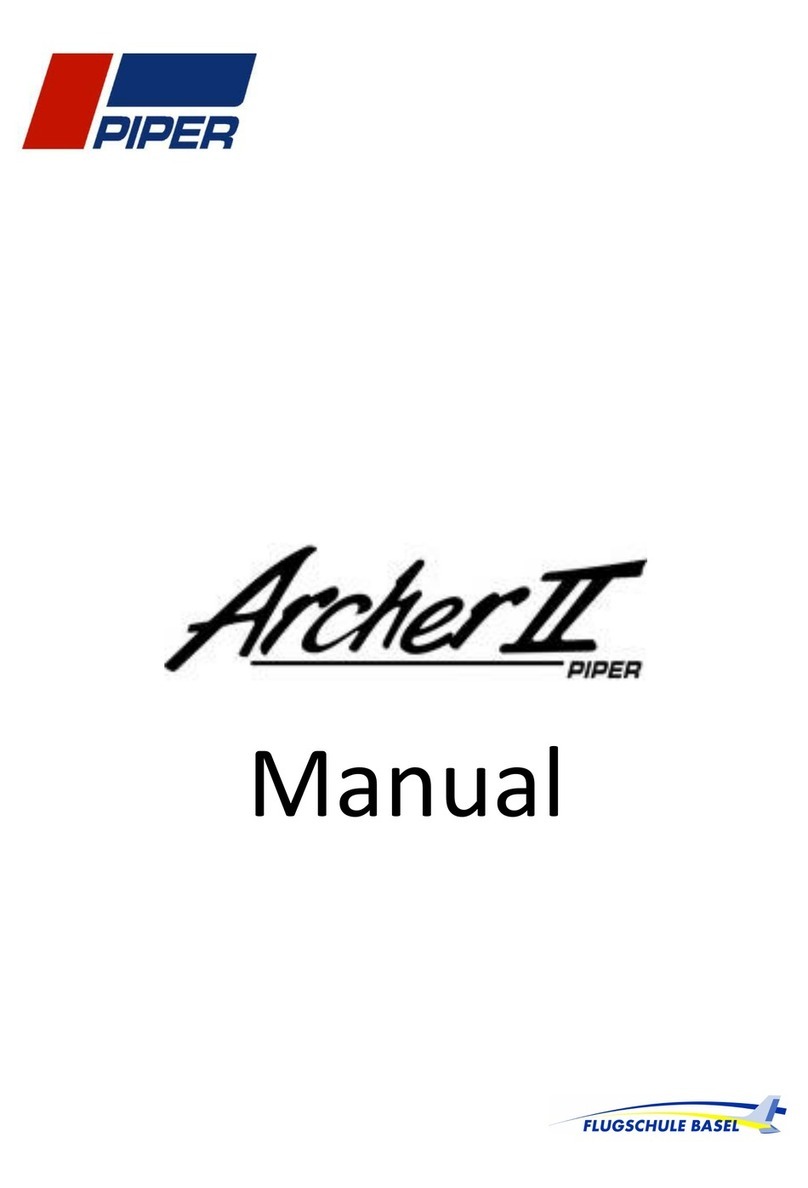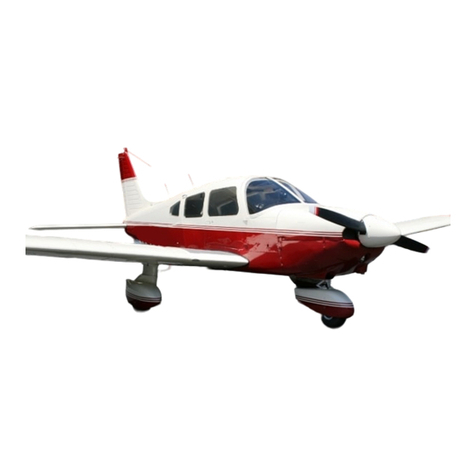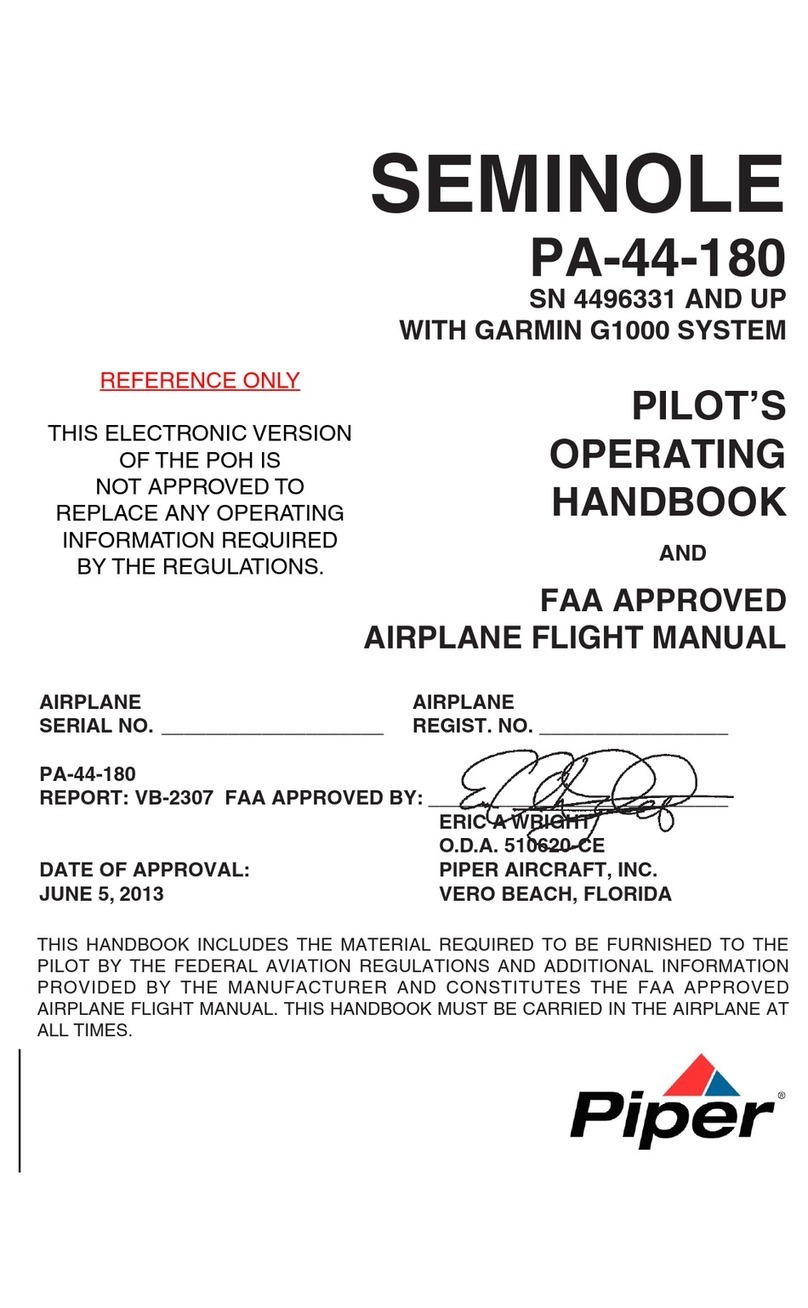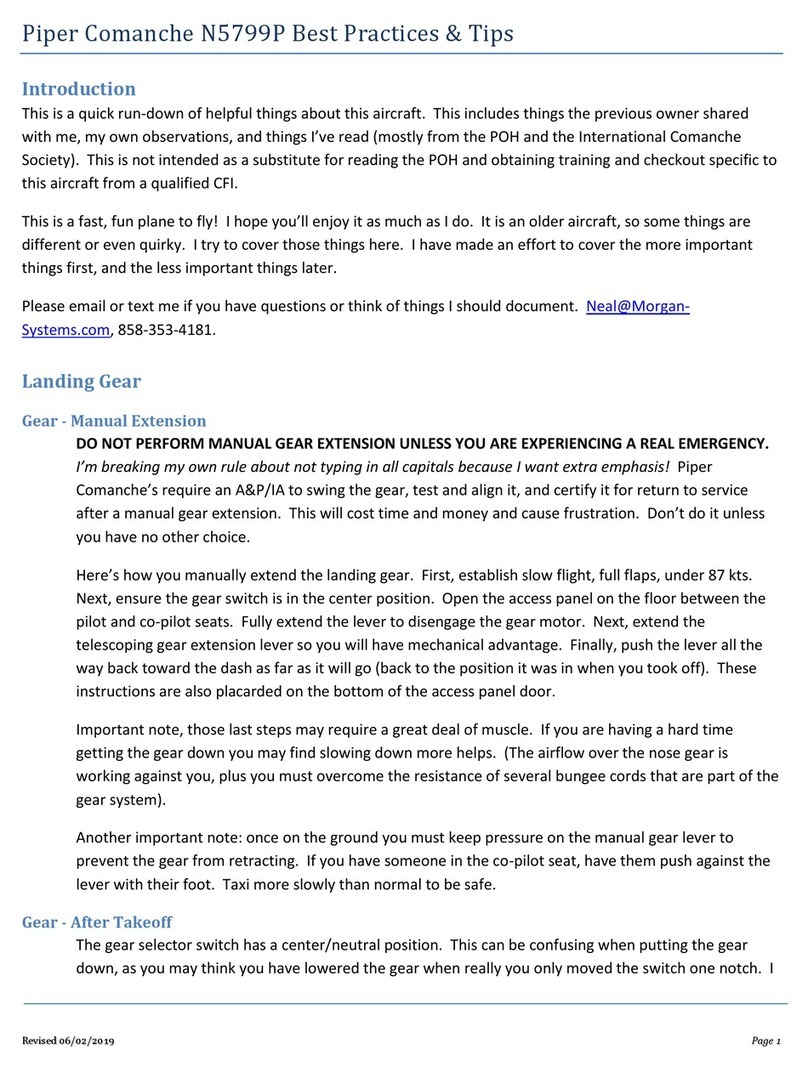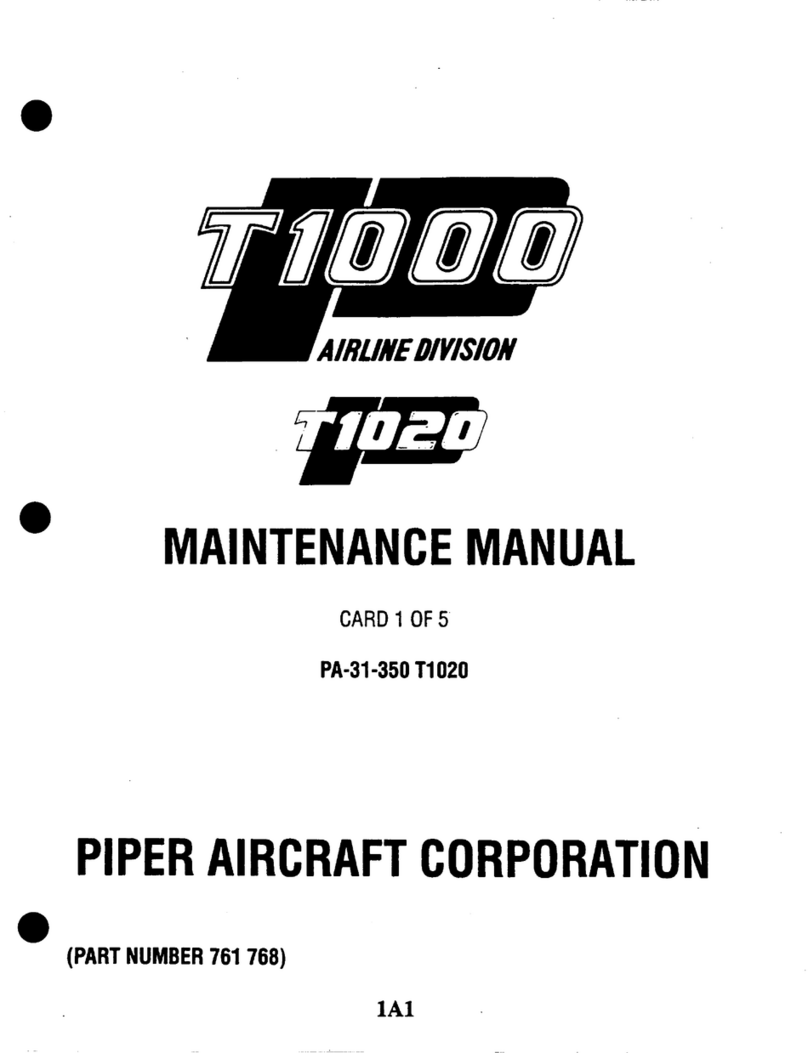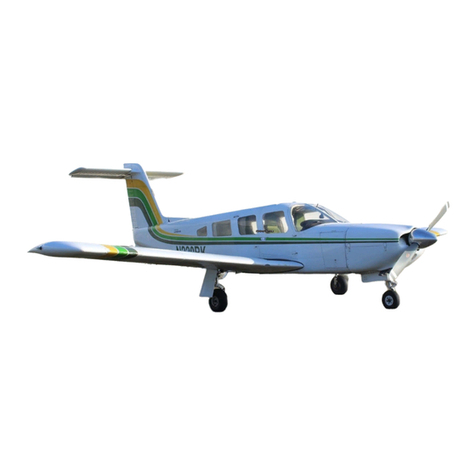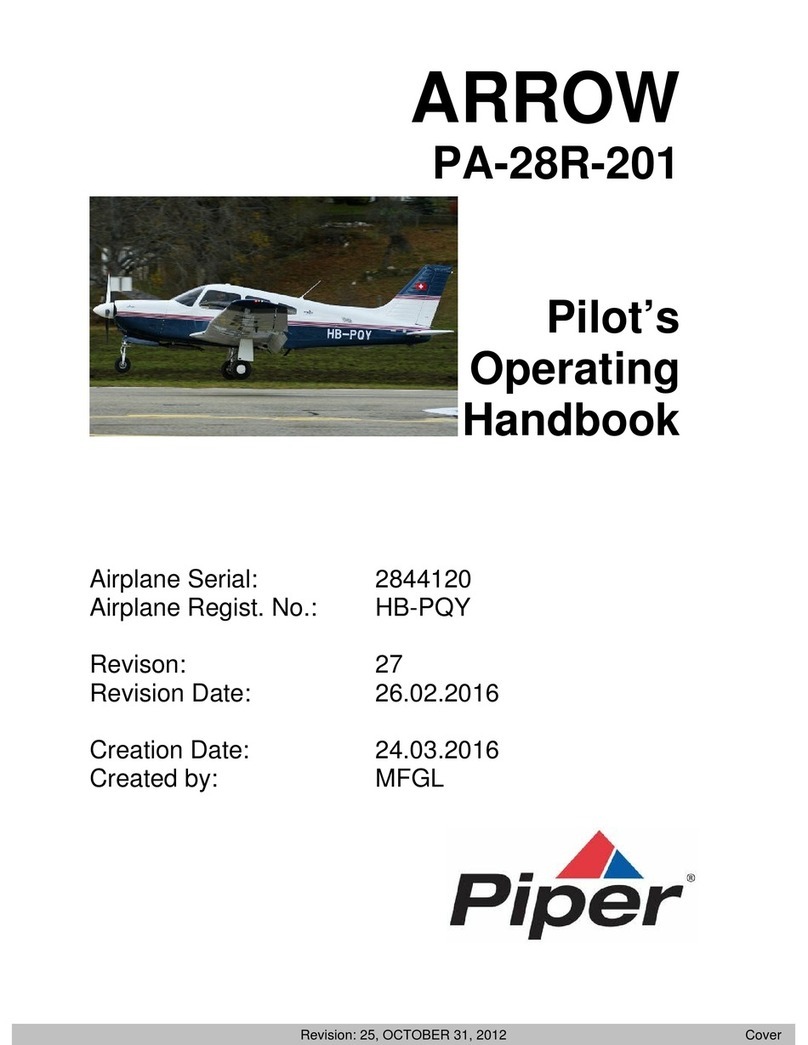
1r·_
·:\___
CHEROKEE180 SECTI0-1\ffl
CONTROL SYSTEMS
Dual controls are provided .as standard equipment with a cable
system used between the controls and the surfaces. The horizontal tail
is of the Flying Tail type (stabilator), with a trim tab mounted on the
trailing edge of the stabilator to reduce the control system forces. This
tab is actuated by a control wheel on the floor between the front seats.
The stabilator provides extra stability and controllab ility with less size,
drag and weight than conventional tail surfaces. The ailerons are
provided with a differential action which tends to reduce adverse yaw
in turning maneuvers, and which also reduces the amount of
coordination required in normal turns . A rudder trim adjustment is
mounted on the right side of the pedestal below the throttle quadrant
and permits directional tri.qi as needed in flight.
The flaps are manually operated , balanced for light operating
forces and spring-loaded to return to the up position . A past~center lock
incorporated in the actuating linkage holds the flap when it is in the up
position so that it may be used as astep on the right side. The flap will
not support a step load except when in the full up position, so it must
be completely retracted when used as a step . The flaps have three
extended positions: 10, 25 and 40 degrees .
FUEL SYSTEM
Fuel is stored in two twenty-five gallon (24 gal. usable)· tanks
which are secured to the leading edge structure of each wing by screws
and nut plates. This ·allows easy removal for service or inspection .
The fuel selector control is located on th e left side-panel, forward
of the pilot's seat . The button on the selector must be depressed and
held while the handle is moved to the OFF position. The button
releases automatically when the handle is moved back into the ON
position.
An auxiliary electric fuel pump is provided in case of failure of the
engine driven pump . The electric pump should be on for all take-offs
and landings, and when switching tanks . The pu_mp switch is located in
the switch panel above the throttle quadrant.
